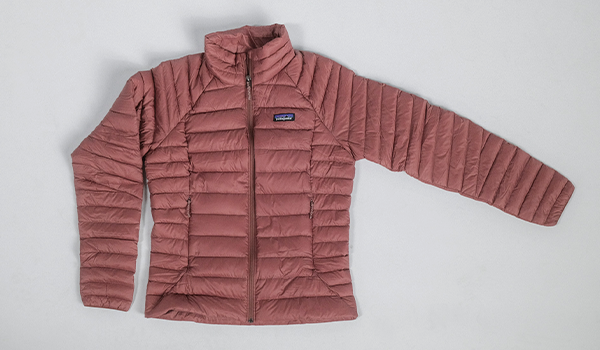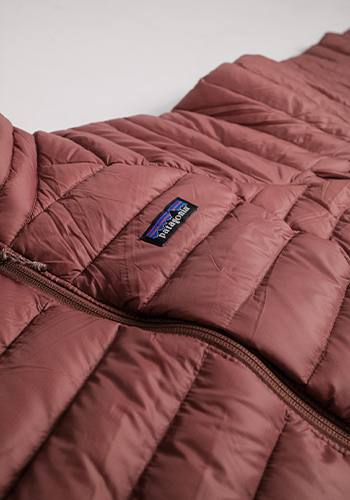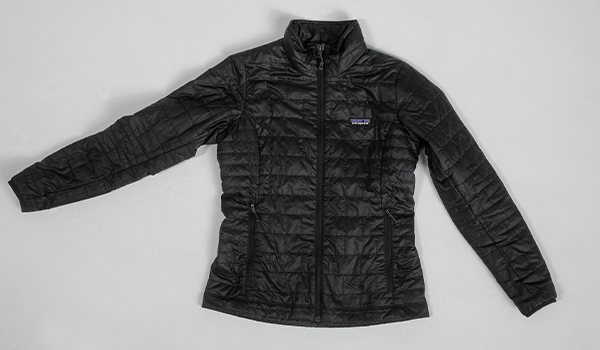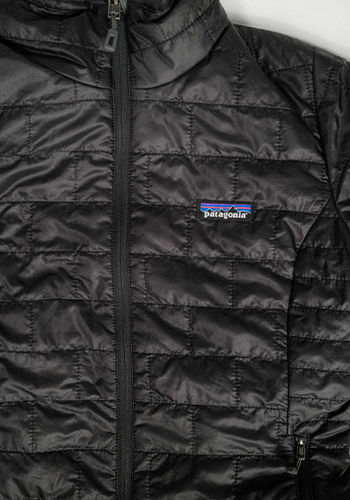 Synthetic vs Down Insulation
Synthetic vs Down Insulation
Synthetic vs Down Insulation: What’s the Difference?
Posted
by
Bianca Chang
on Wednesday, May 7, 2025
When the cold hits, a good insulating piece becomes essential for staying warm, whether skiing, snowboarding, or just braving a frigid morning commute. However, with so many options out there, it can be tricky to know which type of insulation is right for you. The two most common types you'll encounter are down and synthetic insulation—each with its own advantages, disadvantages, and best-use scenarios.
Let’s break down how insulation works and help you choose the right one for your next adventure!
How Does Insulation Work?
Insulation works by using lofty, fluffy materials to trap body heat and keep that warmth close to you. Essentially, it creates small air pockets that hold warm air in, providing a barrier between you and the cold. In ski and snowboard gear, especially, you’ll find insulation packed into jackets, midlayers, pants, and even casual lifestyle pieces designed for staying warm no matter the conditions.
👉 Shop Women’s Insulated Jackets
There are two main types of insulation: down insulation and synthetic insulation. Down is a natural material sourced from geese and ducks, while synthetic insulation (often called "synthetic down") is made from polyester fibers engineered to mimic the properties of natural down.
Each type has its strengths and weaknesses, and understanding the differences will help you pick the best option for your needs.

Down Insulation
What Is Down?
Down is one of the most effective insulating materials out there. It comes from the soft, fluffy layer beneath the tougher exterior feathers of ducks and geese known as plumage. Their underlayer is exceptionally good at trapping heat thanks to its loftiness.
Traditionally, high-end pieces used goose down, which tends to be loftier and warmer. Today, duck down is more common, especially in mid-range and budget products, because it's more readily available. Regardless of the source, the structure of down creates tiny air pockets that trap body heat and help maintain warmth even in freezing temperatures.
What Is Fill Power?
When you're shopping for down jackets, you'll often see "fill power" listed in the product specs. Fill power measures the down’s ability to loft. It’s a measurement of how much space one ounce of down fills in cubic inches. Essentially, it’s an indicator of the quality and efficiency of the down. For example, an equal amount in weight of 900-fill-power down takes up more space and traps more heat than the same amount in weight of 600-fill-power down.
However, a higher fill power doesn’t automatically mean a warmer jacket. Fill power measures quality, not quantity. Warmth depends on several factors:
- The quality of the down (fill power)
- The amount of down used
- The design of the garment (such as how the insulation is distributed with baffles)
- The jacket’s outer shell (windproof materials can boost warmth)
 Patagonia Down Sweater Jacket
Patagonia Down Sweater Jacket
Pros and Cons of Down Insulation
One of the biggest advantages of down is how incredibly warm it is for its size. Since it’s a natural material, down is super lightweight and packs down really small, making it a great choice for travel and outdoor adventures where space and weight matter. Plus, with the right care, down pieces can last for years.
That said, down isn’t perfect. Its main downside is that it loses insulating power when it gets wet, and it can take a long time to dry out once soaked. When it gets wet, down loses its loft and becomes almost paper-thin. The good news? Many brands help combat this by using water-resistant or waterproof fabrics around the down to keep moisture out.
Some people also find that down takes a little extra effort to care for—like using special detergent and making sure you don't store it compressed. But honestly, most technical outerwear needs some TLC to keep it performing well, so it’s nothing too crazy.
Another thing to consider is that down is more expensive than synthetic insulation because it’s a natural material, but many find down worth the price. And finally, while it’s rare, down isn’t hypoallergenic. For most people, it’s not an issue because the down is encased inside the jacket, but if you have extreme sensitivities, it’s something to keep in mind.
Pros:
✔️ Extremely high insulation power for its size
✔️ Very lightweight and highly compressible (great for packing)
✔️ Long-lasting durability if cared for properly
Cons:
❌ Loses insulating power when wet and takes a long time to dry
❌ Requires special care (delicate washing and drying procedures)
❌ More expensive than synthetic options
❌ Not hypoallergenic (though allergic reactions are rare)
👉 Shop Women’s Down Jackets

Synthetic Insulation
Synthetic insulation is designed to mimic the properties of natural down but with a few key differences that make it a great choice depending on where and how you’re adventuring. Instead of natural fibers, synthetic insulation is made from polyester fibers that trap heat much like down does, but with better performance in wet conditions.
One of the biggest advantages of synthetic insulation is that it still keeps you warm even when wet. The fibers don’t collapse when they come in contact with moisture, which makes synthetic gear a smart pick for wet, snowy, or unpredictable environments. Plus, synthetic jackets and layers tend to dry out much faster than down.
Another bonus? Synthetic insulation tends to be less expensive than down, making it a budget-friendly choice for a lot of people. It’s also hypoallergenic, which is great if you have sensitivities to natural materials.
However, synthetic insulation does come with some trade-offs. It’s generally heavier and bulkier compared to down, meaning you may sacrifice a bit of packability and warmth-to-weight ratio. Synthetic fibers also tend to break down faster over time, especially if you compress your jacket often. Each time it’s packed tightly, the fibers can lose a little bit of their insulating power.
 Patagonia Nano Puff Jacket
Patagonia Nano Puff Jacket
Pros:
✔️ Water resistant and still insulates when wet
✔️ Fast Drying
✔️ Less expensive than down
✔️ Hypoallergenic
Cons:
❌ Heavier and bulkier than down
❌ Provides less warmth for its weight
❌ Less durable—insulating power gradually decreases with repeated compression
👉 Shop Women’s Synthetic Insulated Gear
Down/Synthetic Blends
Some brands now offer a hybrid option: down and synthetic blends. These combine the best features of both materials to create insulation that's warm, lightweight, and more versatile. Typically, you’ll find natural down used in areas where maximum warmth is needed, like in the core, and synthetic insulation placed in spots more prone to moisture, like the shoulders, cuffs, or sides.
Blends are a great choice if you want the warmth and packability of down but also need better performance in damp or variable conditions. They’re becoming increasingly popular in ski, snowboard, and everyday jackets because they offer a balanced middle ground between performance and price.
Whether you go with down, synthetic, or a blend of both, choosing the right insulation comes down to your needs, your activities, and the conditions you expect to face. Each has its strengths, and understanding the differences can help you pick the perfect piece to keep you warm and ready for anything this winter.
Categories:
Fashion
Tagged: how to dress for winter, outdoor gear, apparel, how to choose, insulation